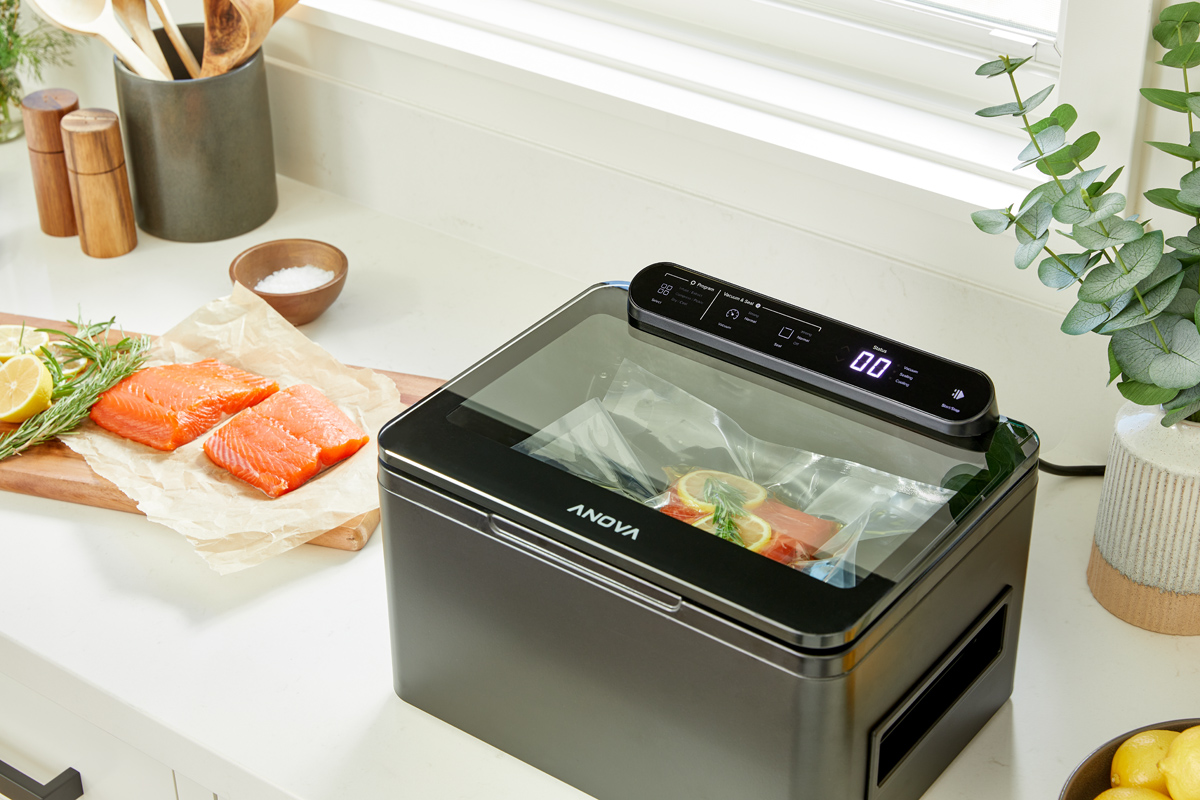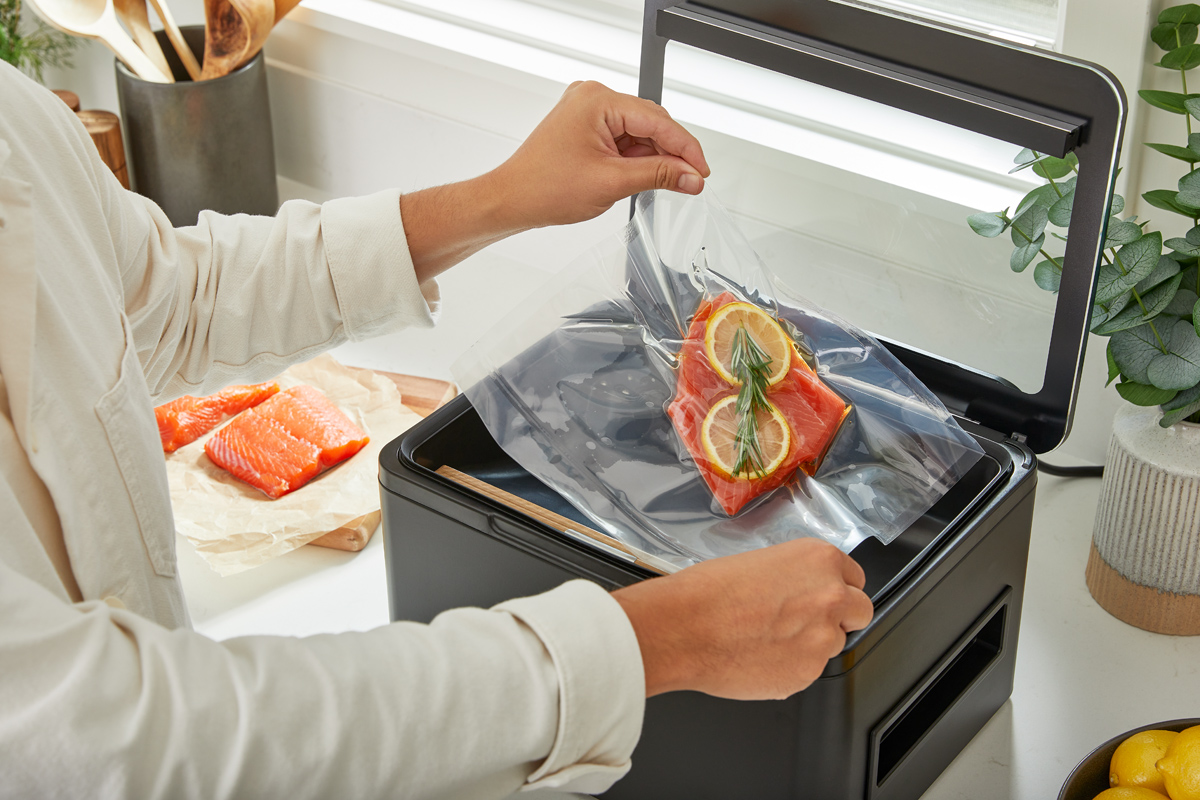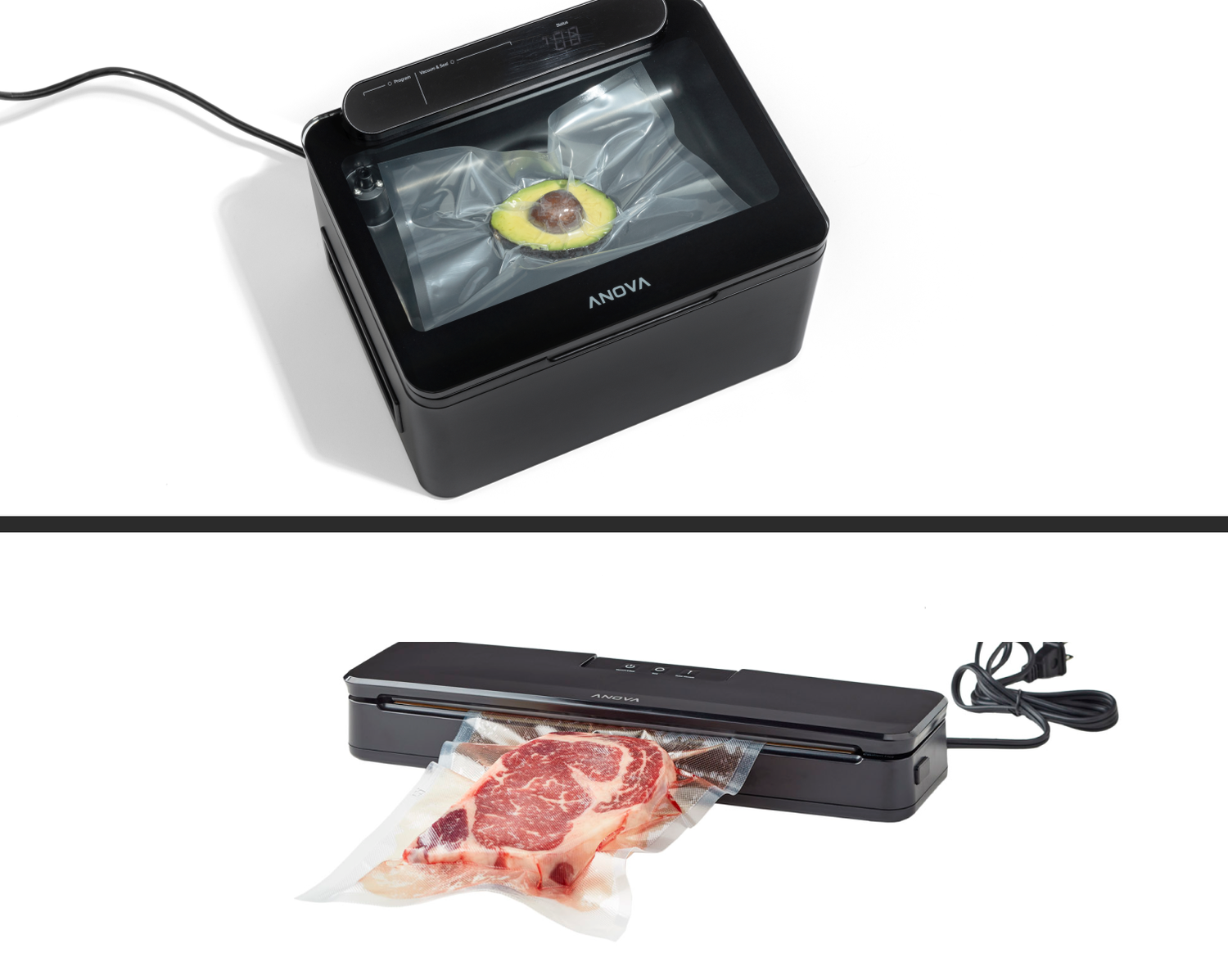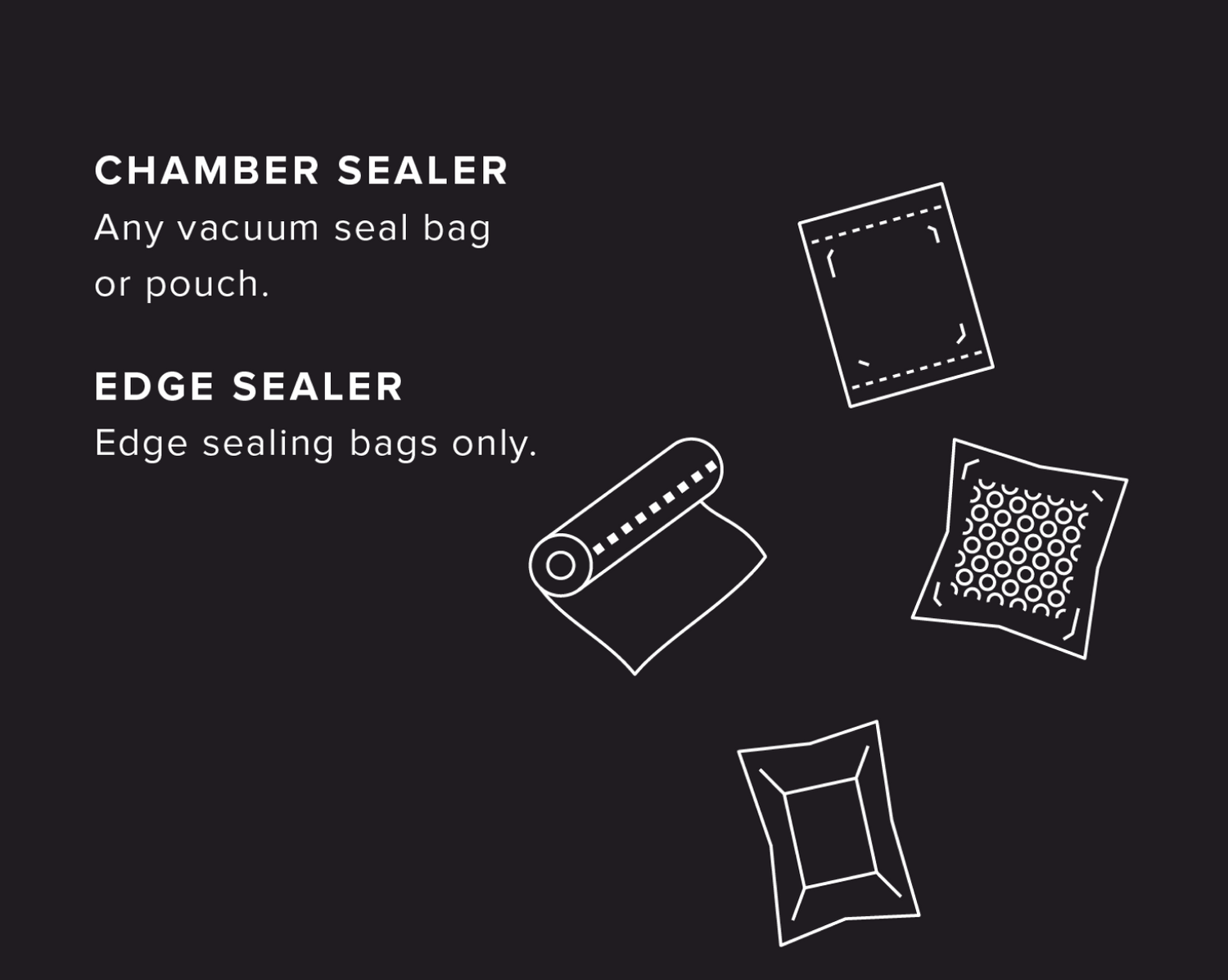In the normal operating mode for sealing bagged food in the chamber vac, the vacuum is pulled for the duration specified by the settings (strong or normal). You can modify the amount of time from these factory settings if wanted. A powerful pump then removes all air from the entire chamber, including inside the pouch, creating an equally pressurized environment, both inside and outside of the bag. Once all of the air is removed, the sealer bar heats up and seals the pouch shut, void of any excess air. Once sealed, the chamber releases the vacuum and returns to normal atmospheric pressure – creating a truly airtight seal. Because this process does not suck air directly out of the side of the bag, nor does it pull liquids out of the bag, it’s possible (and very easy) to seal soups, stews, marinades, moist seafood, and more within the bag without any risk of sucking said liquids into the vacuum mechanism of the machine.

Step 1
Plug your Anova Precision™ Chamber Vacuum Sealer in, turn it on, and open the hinged lid.

Step 2
Place a chamber vacuum pouch, filled with food, into the chamber with the open lip of the pouch on the sealing bar.

Step 3
Once the bagged food is situated as needed, tuck the open end of the pouch under the silver bag holder, and close the chamber door.

Step 4
After closing the chamber, select your desired vacuum mode and press “Start/Stop.”
Please note:
The chamber vacuum can be set to pull either a “strong” or “normal” vacuum, and then you can use a “strong” or “normal” seal — or not seal at all.
You can use the factory-set lengths of time for these settings or you can adjust the amount of time the vacuum is pulled or the sealing bar is heated.

Step 5
Once sealed, the chamber will release the vacuum and return to normal atmospheric pressure. You can then open the chamber door and remove your sealed food.
What’s the difference between a chamber vacuum sealer and an edge sealer?

Chamber sealers vs. edge sealers.
The most important distinction between a chamber sealer and the more common edge sealer or “suction sealer” is the way in which the air is removed from the sealer bag or pouch. Edge sealers simply suck the air directly out of the bag that’s being sealed. Chamber sealers, on the other hand, remove air from the entire chamber, including inside the pouch, creating an equally pressurized environment, both inside and outside of the bag. This method is more efficient than that of an edge sealer because the equal pressure ensures that the food or liquid being sealed stays wherever you have placed it within the sealer pouch, and will never be sucked into the vacuum mechanism of the sealer. This is especially useful when sealing liquids, as they can cause a mess or faulty seal when sucked towards the opening of an edge sealer bag. Outside of sealing foods in vacuum-sealed bags, chamber vacuums can also be used for a handful of alternative cooking use cases that an edge sealer can’t. In the case of the Anova Precision™ Chamber Vacuum Sealer, we’ve pre-programmed the most useful settings straight into the interface of the sealer: infusion and extraction, compression and pickling, and rapid cooling.

Chamber pouches vs. edge sealer bags.
You’ll notice that chamber vacuum pouches look different from the bags used for edge sealers like the Anova Precision Vacuum Sealer and Vacuum Sealer Pro. The chamber pouches are completely clear and smooth, while the edge sealer bags have a built-in mesh liner, running the length of the bag. Edge sealers require this mesh liner to directionally channel air as it is pulled out of the bag, for a quick and even sealing experience. Because chamber vacuums don’t need to suck air directionally, they don’t require these mesh liners to achieve an airtight seal. This effectively means you can use either style of bag to seal food with a chamber vacuum sealer, but chamber sealer pouches are not compatible with edge sealers.
The benefit of not requiring the mesh liner needed by edge seal bags is that chamber-specific pouches require less single-use plastic to manufacture and are more budget-friendly as a result. Depending on what you’re sealing, you can also use them more than once – especially when sealing dry, non-messy foods. Just slice off the sealed edge, wipe the bag out, and use it again at your leisure.

